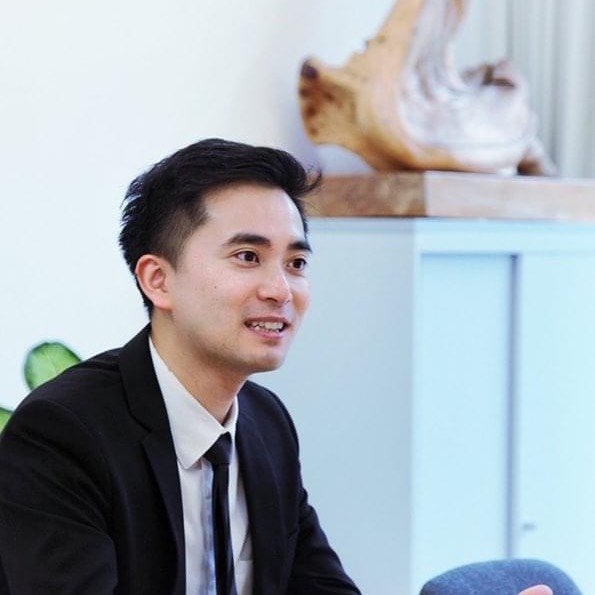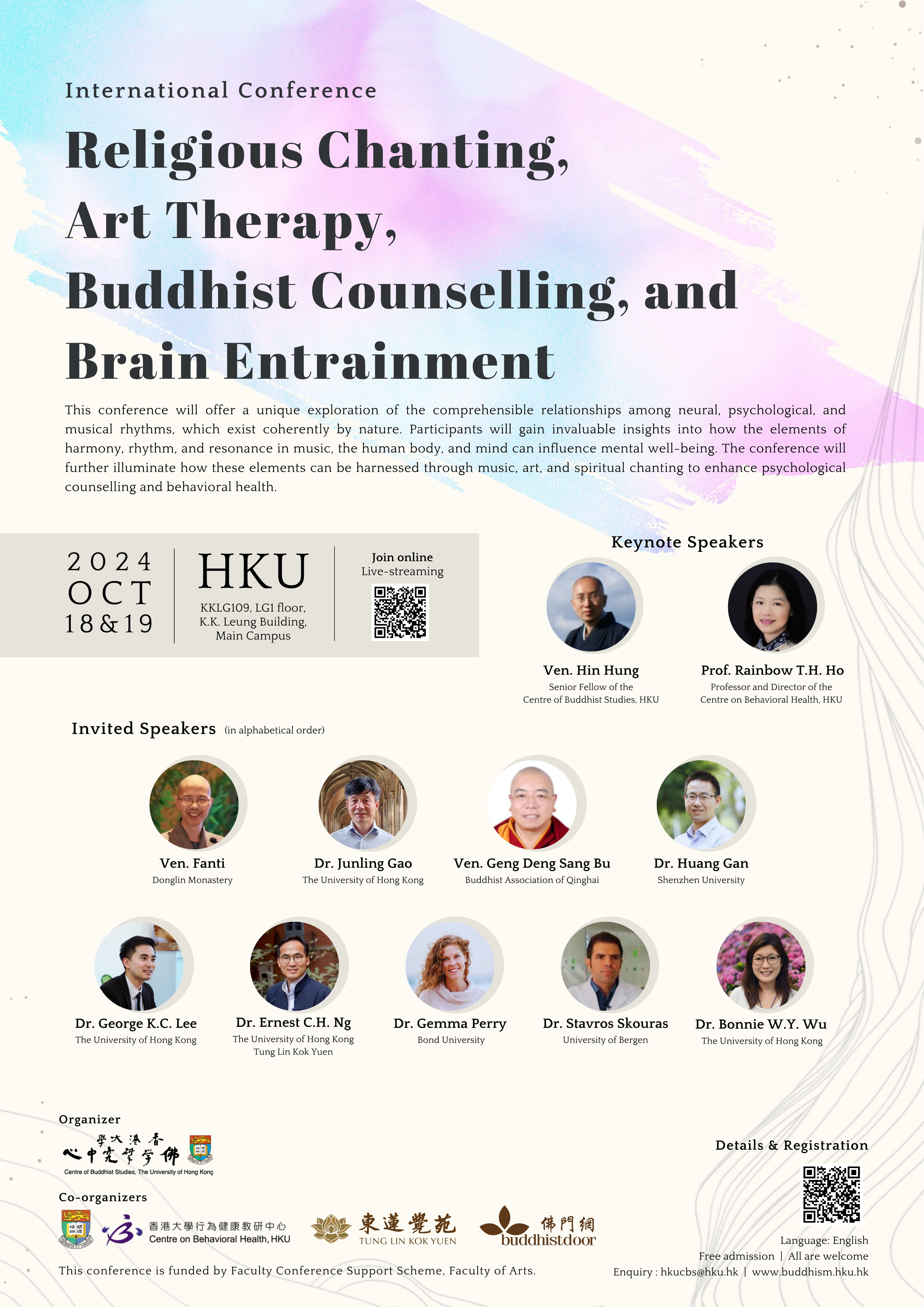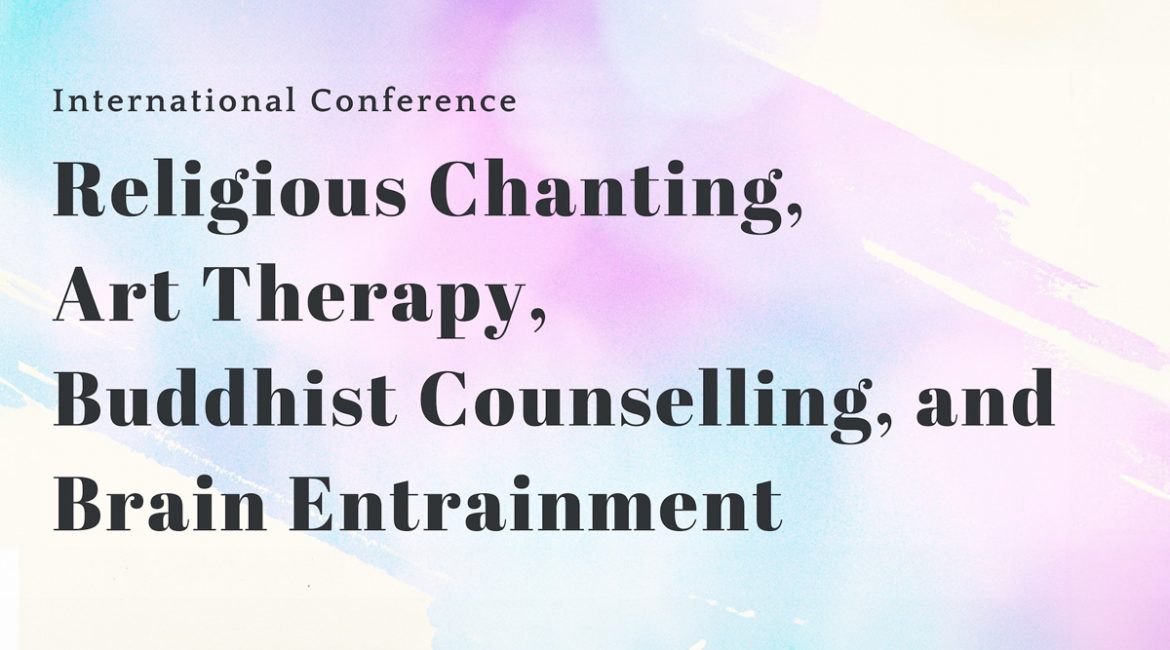In this series of interviews, I spoke to keynote speakers and guests of the “Religious Chanting, Art Therapy, Buddhist Counselling, and Brain Entrainment” conference from 18–19 October 2024 at The University of Hong Kong. The conference aims to apply spirituality and art therapy to counselling, using neuroscientific technology in contemporary society; foster interdisciplinary collaboration for application and innovation in mental well-being; and brainstorm new ideas for spirituality and art in the age of AI.
The conference is co-organized by The University of Hong Kong’s Centre of Buddhist Studies and Centre on Behavioral Health, Tung Lin Kok Yuen, and Buddhistdoor. It is funded by Faculty Conference Support Scheme, Faculty of Arts.
A licensed psychologist, Dr. Kin Cheung (George) Lee is senior lecturer at the Centre of Buddhist Studies. His interests are Buddhist counselling, Buddhist-derived interventions, and the theoretical orientation of Buddhist teachings. He serves as chairman of the Committee of the Master of Buddhist Counselling Programme.

Raymond Lam (RL): Your upcoming talk for the conference is called: Virtual Buddhist Counselling in Modern Times: From ‘Know No Truth’ to AI Counselling. How did the pandemic shape the need for virtual counselling and remote therapy?
George Lee (GL): It reminds me of the phrase “no mud, no lotus.” One outcome of the “mud” of the pandemic is the way we have learned to establish interconnectedness despite physical constraints. While I don’t believe virtual connections can fully replace in-person interactions, they serve as an important medium for engaging individuals and maintaining a certain level of healthy connection. Loneliness has always been a deep and harmful emotion, and the pandemic certainly exacerbated it. However, many mental health professionals worldwide have successfully established online counselling, yielding positive results.
Even today, online counselling remains a viable option, and the Buddhist Counselling Centre continues to offer online services for individuals outside Hong Kong, particularly new immigrants to the UK. In my view, online counselling increases accessibility by connecting counselors with individuals who have specific cultural, linguistic, or emotional needs, allowing clients to feel more comfortable receiving support from home, often at a lower cost. However, I want to emphasize that, whenever possible, in-person counselling tends to be more impactful, as the presence of the counselor and the rapport between counselor and client are enhanced by physical interaction.
RL: In the context of Buddhist counselling, are there any methodological differences between virtual counselling or in counselling? What makes it easier and what makes it harder?
GL: In the context of Buddhist counselling, teaching meditation in a virtual counselling setting presents unique challenges, primarily because effective meditation instruction relies heavily on the counselor’s ability to observe and assess the client’s physical and mental states. Additionally, gauging a client’s risks and ensuring safety can be complicated, as they may be located anywhere, making it difficult to access emergency services if needed, especially if the client is not in Hong Kong.
While some clients may be harder to engage in a virtual format, the accessibility of online sessions is a significant advantage. First and foremost, ensuring that equipment and internet connections are functioning properly is crucial. Counselors can help mitigate challenges by checking the client’s location, discussing confidentiality, and assessing safety. Being extra observant of a client’s behaviors and responses is essential—counselors might say, “I noticed you responded to someone just now; is everything okay?” Furthermore, utilizing various features of online platforms can enhance engagement; for example, using Zoom’s whiteboard for drawing exercises and a virtual hope box app for clients experiencing suicidal ideation. Other helpful tools could include mindfulness apps for guided practices and mood tracking applications to monitor emotional states and progress.
RL: “Note, Know, Choose” is your mantra in counselling. What are some of the practical exercises you have your clients do so that they can note, know, and choose as a regular behavioural pattern?
GL: The most traditional method is meditation, where the client learns to Note how a thought arises in response to certain triggers in life, Know how they cling to these thoughts and make them their reality, and then Choose an action that differs from those causing suffering. This can range from easing one’s mind to becoming non-attached to a thought or responding kindly to someone who is hostile. However, focusing solely on thoughts can be challenging, so I sometimes incorporate art, music, or physical exercises. For example, I might invite the client to engage in body percussion or practice movements from Baduanjin qigong (八段锦) to help them Note the difference between tightness and looseness, Know what happens in their body and mind regarding these sensations, and Choose actions that lead to less suffering.
Additionally, I may ask clients to draw three pictures: the first to represent fear, the second to depict peace and compassion, and the third to integrate the two by enlarging the representation of peace and compassion while reducing the size of the fear representation. Through this practice, clients typically experientially Note the sensations of fear, gain insight into the reasons behind their fear and desire for security, and understand how they can Choose different cognitive approaches to address these feelings.
RL: In our last interview, you discussed your book, which gives the first comprehensive Buddhist model of modern counselling. With the advent of AI counselling, how might you update some of your earlier frameworks?
GL: The first thing I did is to invite AI to show me some suggested answers for this interesting question. Those two selected answers from AI with my opinions:
(AI said) Integration of AI Tools: I would explore how AI can be utilized to enhance the therapeutic process, such as through mindfulness apps or virtual counselling platforms. These tools can help clients engage with Buddhist practices like meditation and mindfulness in a more accessible way.
(George) I agree with that and would add that some counselling tools can be particularly useful in certain situations. For example, the Virtual Hope Box app for suicide prevention can help both counselors and clients create reminders that distract from suicidal urges and highlight the meanings in life. We are in an era where we need to embrace AI as a partner and collaboratively build a positive future for humanity.
(AI said) Considerations: With the rise of AI, it’s crucial to address the ethical implications, especially regarding confidentiality and the quality of care. I would update my frameworks to include guidelines on how to responsibly integrate AI into counselling practices while maintaining a strong ethical foundation rooted in Buddhist principles.
(George) I believe that, in addition to ethical considerations—which rely heavily on logic, critical thinking, and adherence to guidelines, areas where AI can excel—I would utilize AI to explore case conceptualization across different schools of psychotherapy and psychiatry. This approach can provide Buddhist counselors with cross-disciplinary insights, allowing us to view client issues from various angles and ultimately offering more resources to address the causes of suffering.
In essence, I think it is important for Buddhist counselling to become familiar with the AI technology in order to enhance our work with clients.
RL: How likely is AI counselling going to become as helpful as human-to-human pastoral care? Do you think it possible, or are you skeptical about AI’s progress in embodying genuine empathy and care for patients?
GL: I believe AI can be a helpful partner in counselling; however, rather than being skeptical, I maintain that AI cannot replace the human connections essential to the counselling process. I still value the uniqueness of human-to-human interaction and the compassion that arises from our shared humanity. The ability to understand suffering and address its deepest causes in another person is a spiritual skill that cannot be easily replaced. Moreover, whether AI can be as effective as human pastoral care is not my primary concern. My understanding of the essence of Buddhism is that our goal is always about cultivating the mind to achieve liberation from suffering. In this pursuit, any tool that facilitates our path of cultivation can be beneficial.
RL: You have been working in the counselling module at HKU CBS for some time now. Are the needs of Hongkongers seeking Buddhist counselling more or less the same as you’ve encountered in California/elsewhere?
GL: In general, I am sorry to say that the people I have encountered in California seem happier. This may be due to the bright sunshine, more spacious environments, abundant nature, a slower and more manageable pace at work, and greater interpersonal space. I have also presented in various cities around the world, including Beijing, Taipei, Tokyo, and Vancouver, and I must admit that the individuals I met in Hong Kong do not appear to be as happy as others. This observation aligns with the World Happiness Index 2024, which ranks Hong Kong at 86th in the world—quite low for a well-developed city. Additionally, the alarming suicide rates, particularly among teenagers, are a serious concern. It makes me ponder what is wrong with us as Hongkongers. What have we done to make this beautiful city such a challenging place to live? There is so much suffering in the world, and I do not believe it should be this way.
Of course, as you’ve seen in my work over the past couple of years, I believe Buddhism is one of the best remedies for making Hong Kong—and even the world—a happier place. One final message I want to emphasize is that for the many suffering individuals I have encountered, a key cause of suffering and a turning point in recovery is self-compassion. This concept revolves around simple yet challenging ideas, such as: ‘Do I accept myself as I am?’ ‘May I allow myself to be happy and choose to be kind to my body and mind?’ and ‘Can I acknowledge what I truly want in life and recognize that I don’t need it to be happy?’
Happiness begins with easing our body and mind. Loving others must start with loving oneself. Healing from deep wounds begins with approaching them with kindness, patience, and understanding. When we are willing to cultivate our own sustainable and genuine happiness, we are ready to extend compassion to others, thereby creating a happier home for our fellow Hongkongers.

Related features from BDG
Book Review: The Guide to Buddhist Counseling


